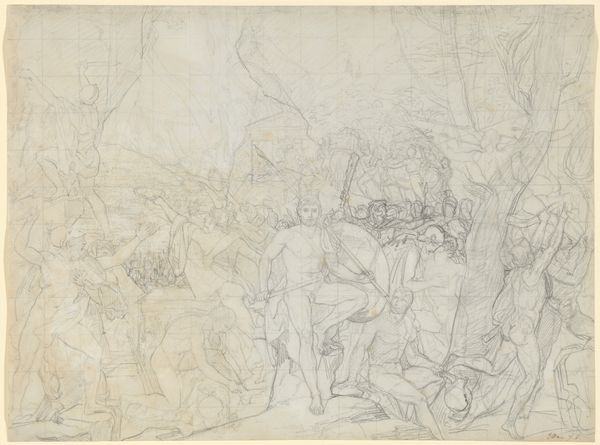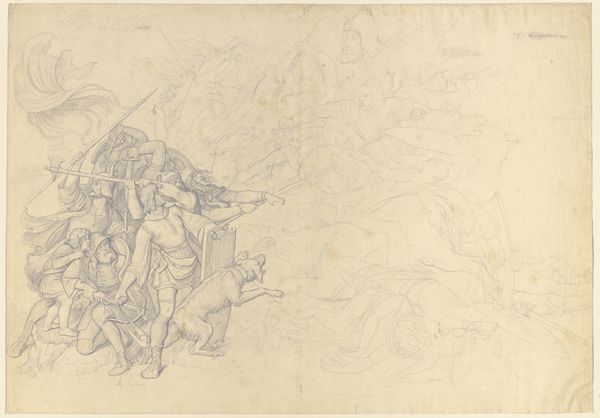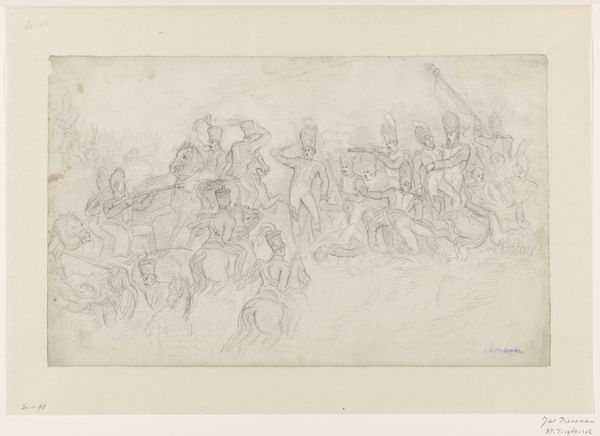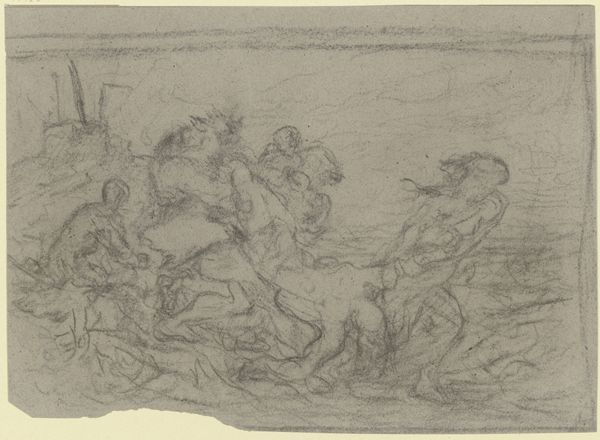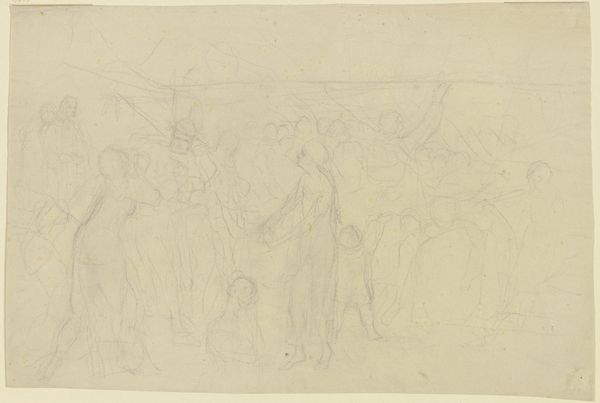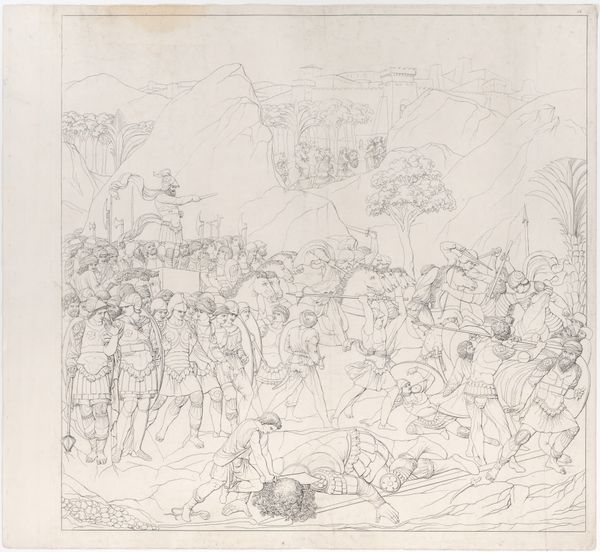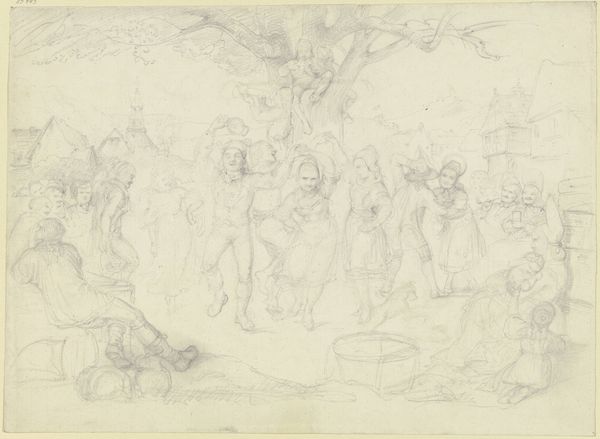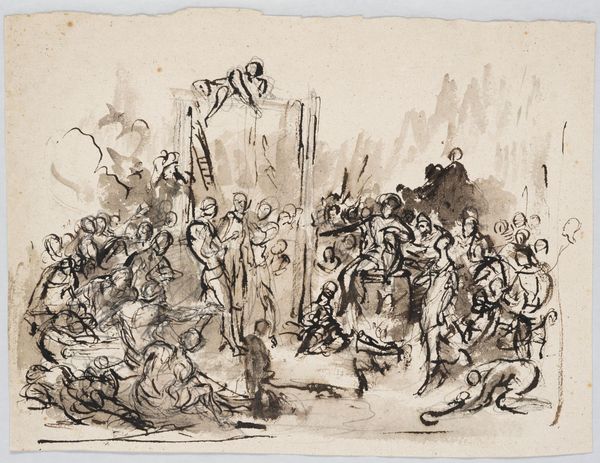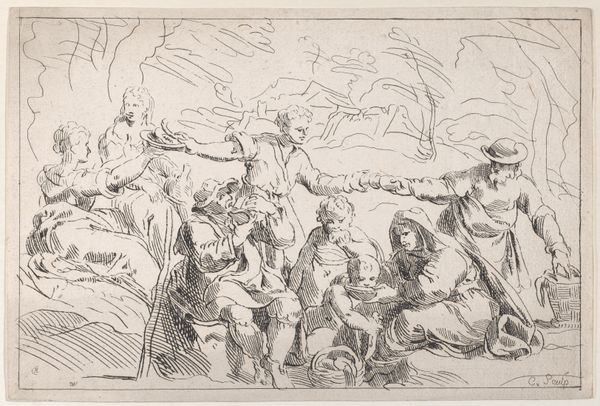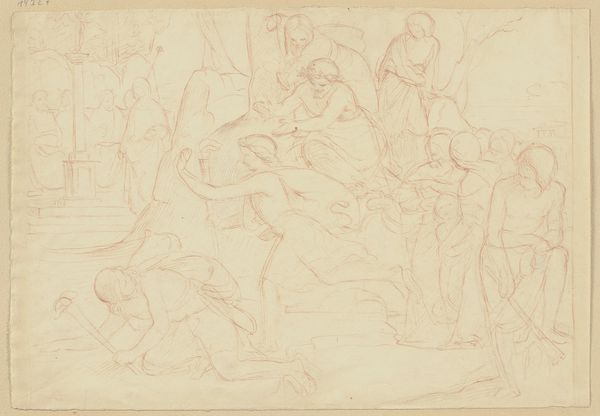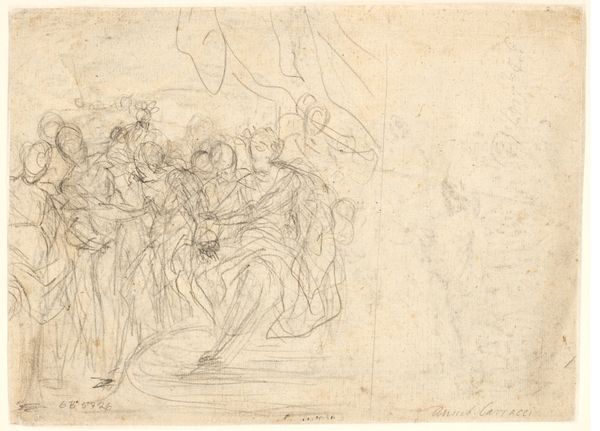
Die Auffindung der Leiche des Kaisers Friedrich Barbarossa im Fluss Kalykadnus bei Selencia in Syrien am 10. Juni 1190 c. 1828 - 1834
0:00
0:00
drawing, paper, pencil
#
drawing
#
16_19th-century
#
pencil sketch
#
etching
#
paper
#
german
#
romanticism
#
pencil
#
history-painting
#
academic-art
Copyright: Public Domain
Editor: This is "The Discovery of the Body of Emperor Frederick Barbarossa in the River Kalykadnus near Selencia in Syria on June 10, 1190," a pencil drawing by Julius Schnorr von Carolsfeld, created around 1828 to 1834. The scene is very busy; a crowd of figures surrounds what appears to be the deceased Emperor. How do you interpret this work through a historical lens? Curator: It's a powerful representation of a pivotal historical event, seen through the lens of 19th-century Romanticism and academic art. The image, designed for public consumption, immediately engages with German national identity through the figure of Barbarossa. Consider how the artist is actively shaping public memory and national identity by depicting this particular moment, what do you think? Editor: I guess he’s highlighting the tragic end of a revered leader, contributing to a sense of national pride mixed with sorrow. Does the medium – the pencil drawing itself – play a role in how this history is presented? Curator: Absolutely. A drawing allows for dissemination through engravings. The work’s impact isn’t limited to an elite audience who might visit an art gallery, but is intended for reproduction in books and prints. Think about the politics of imagery; whose story is being told, and who is the audience? Editor: So, it's less about pure artistic expression and more about disseminating a specific, perhaps politically charged, narrative to the masses? The romanticized style also plays a role, elevating it beyond a simple historical record. Curator: Precisely! The style adds emotional weight, influencing how people *feel* about this historical event. Notice the almost theatrical poses and expressions. To what extent do these elements contribute to constructing a national myth? Editor: That makes so much sense! I was focused on the image as art, but seeing it as a vehicle for political messaging…that shifts my understanding entirely. Curator: It's a valuable lesson: Art rarely exists in a vacuum. Investigating the circumstances around its creation can give a better and deeper sense of understanding and interpretation. Editor: Absolutely. I'll definitely look at art with a more critical and historical eye going forward.
Comments
No comments
Be the first to comment and join the conversation on the ultimate creative platform.
